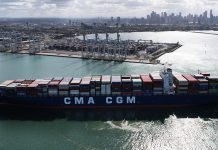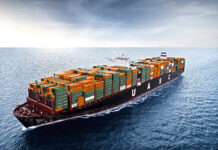
April saw the third consecutive monthly climb in long-term contracted ocean freight rates, with shipping costs rocketing by 11.1% globally to stand 109.9% up year on year, according to the latest Xeneta report.
The data, revealed in the latest Xeneta Shipping Index (XSI®) Public Indices for the contract market, demonstrates how supply chain demand, successful carrier strategies and continued Covid disruption in China are coalescing to “pile on the pain” for shippers worldwide.
Xeneta’s XSI®, compiled from real-time data crowdsourced from leading global shippers, shows near universal long-term hikes across key trading corridors.
European developments led the charge in April, as the import benchmark surged 16.8% (up 107.3% year-on-year), while export rates climbed 20.3% over the month, now standing 102.8% up against April 2021.
At the same time, Far East moves were less pronounced, with imports edging up 0.8% (52.3% higher year-on-year) and exports jumping 9% – a staggering 127.7% year-on-year appreciation.
In the United States, the import index also rose by 9% – a 109.7% gain on this time last year – while the export benchmark recorded the month’s only decline, and that by a mere 0.8%.
Nevertheless, this latter figure remains 29.8% up year-on-year, showing how even the XSI®’s ‘weakest performer’ is still enjoying a banner year.
“Yet again we see the carrier community sitting pretty when it comes to long-term contracted rate negotiations,” commented Xeneta CEO, Patrik Berglund. “The data from our contributors is one indicator, while the financial performance of leading operators is another. They are, quite frankly, reaping huge rewards from a red-hot market.”
Berglund pointed out, “It’s a position of power the carriers have no desire of relinquishing.”
China’s zero-Covid policy and the prolonged lockdown in Shanghai has caused important disruptions in the supply chain, especially in the busiest container port in the world, port of Shanghai.
“That is hitting exports, which could obviously free up capacity and put pressure on spot rates. However, proactive carriers are moving to protect their dominant positions, as we can see with the 2M alliance aiming to blank three Far East-North Europe sailings in May. They are not alone in this response to what is, in these times, a rare crack in otherwise solid market fundamentals,” said Berglund.
Xeneta’s CEO has also noted a shift from US West Coast to US East Coast hubs by carriers (together with the impact of Chinese lockdowns) is reducing the congestion that has come to define ports such as Long Beach in recent times. Berglund reveals that container imports into Los Angeles are down by around a fifth year-on-year, while the port of New York & New Jersey is now the second busiest import destination, after Long Beach, in the country.
“But it’s not just the carriers that are choosing proactivity,” he stated.
With stretched capacity, disruptions, carriers omitting port calls to focus on key terminals, and sky-high rates, shippers are increasingly moving to “take matters into their own hands”, according to Berglund, who mentioned the example of the German retailer Lidl, which has worked on the creation of its own shipping line, Tailwind Shipping.
“As such, this is a really bold move by Lidl. Time will tell if it’s a success, potentially penning a blueprint for others to follow as they look to free themselves from the grip of all-powerful carriers,” commented Berglund.





